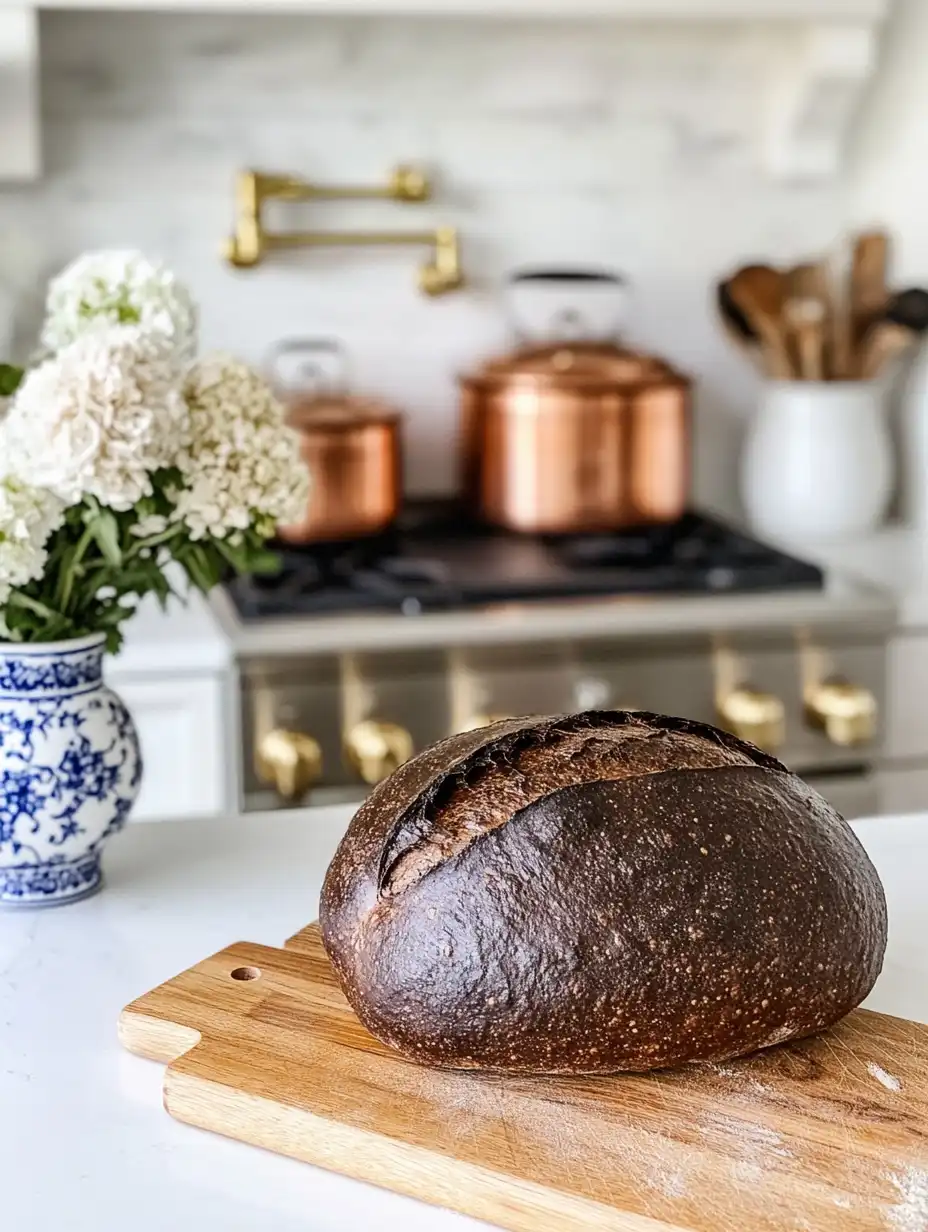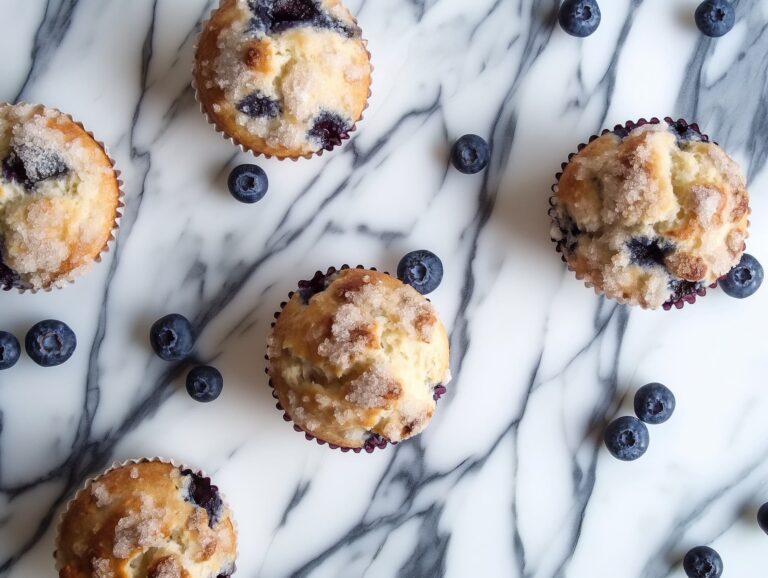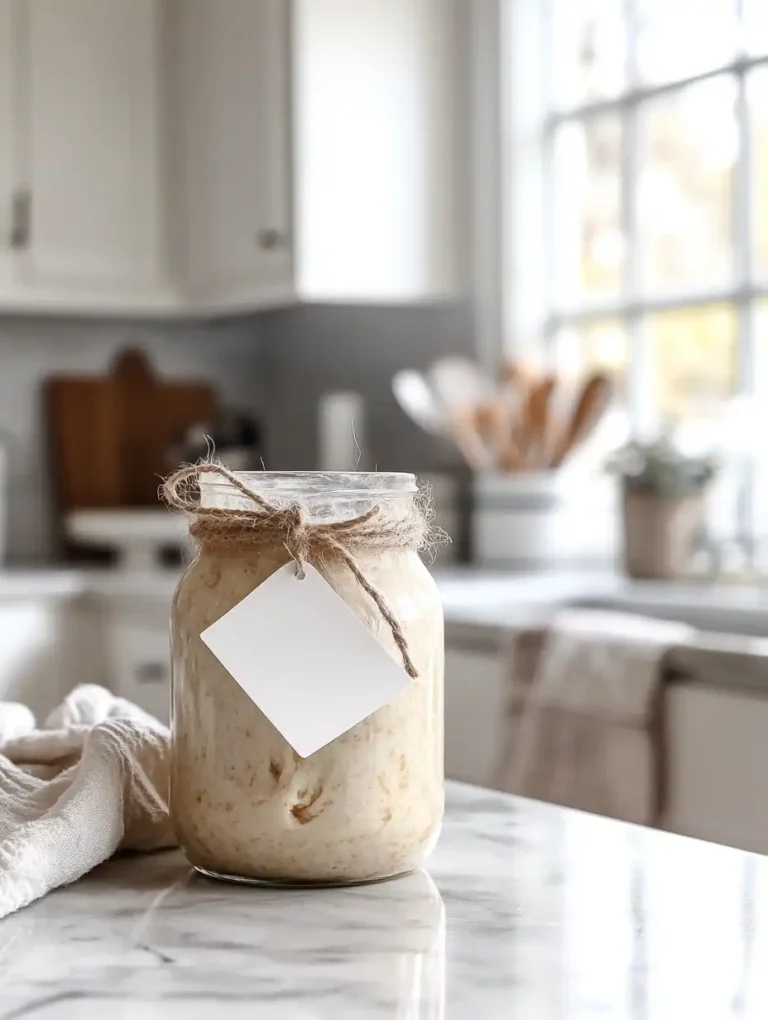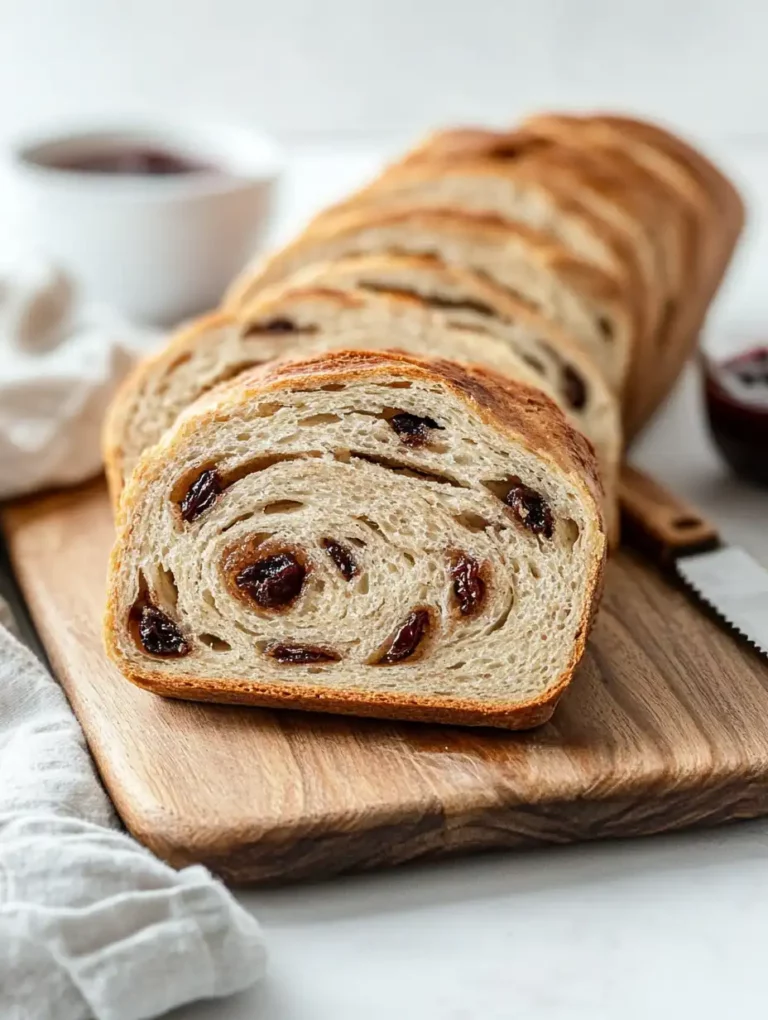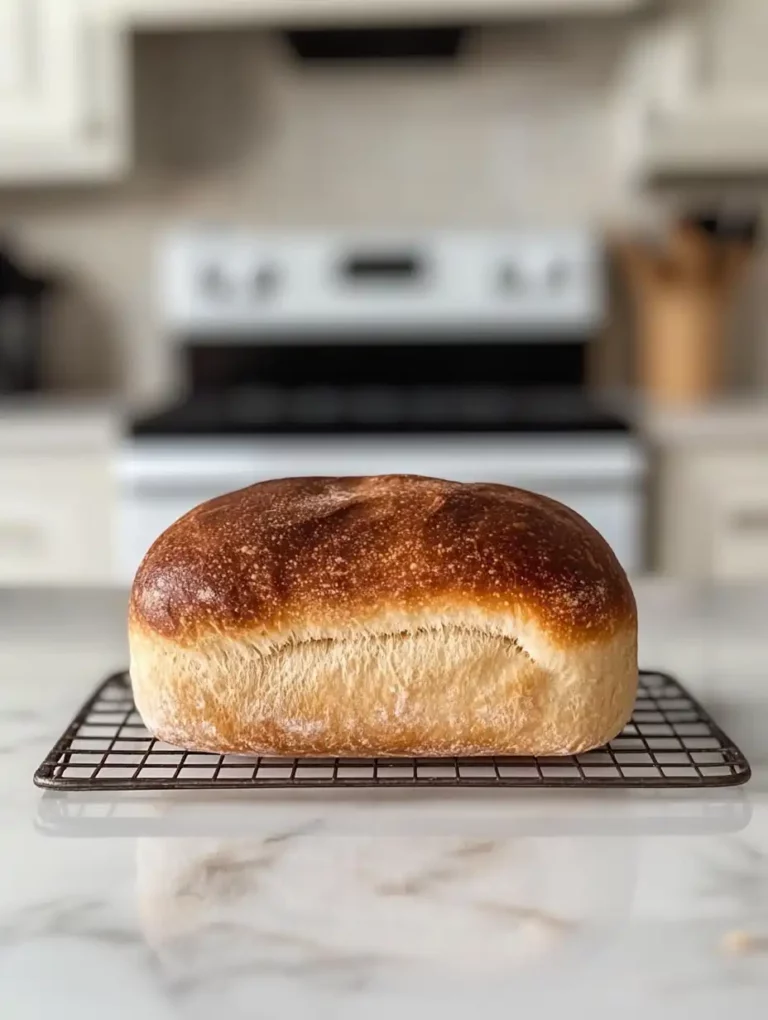Sourdough Pumpernickel Bread is a rustic, flavorful loaf that combines the tangy complexity of sourdough with the rich, earthy taste of rye. This recipe holds a special place in my heart, as my brother actually requested it for his 30th birthday present! Let me share with you how to create this delectable bread that’s sure to impress.
Shop the post
Why You’ll Love This Sourdough Pumpernickel Bread
There’s something magical about the process of making Sourdough Pumpernickel Bread. The deep, complex flavors that develop from the combination of molasses, cocoa powder, and rye are truly remarkable. As someone who owns a grain mill, I have the luxury of using freshly ground rye, which not only enhances the flavor but also provides additional health benefits.
Rye is known for its high fiber content and low glycemic index, making it a great choice for those watching their blood sugar levels. It’s also rich in vitamins and minerals, particularly B vitamins and iron. When you bite into a slice of this Sourdough Pumpernickel Bread, you’re not just treating your taste buds – you’re nourishing your body too!
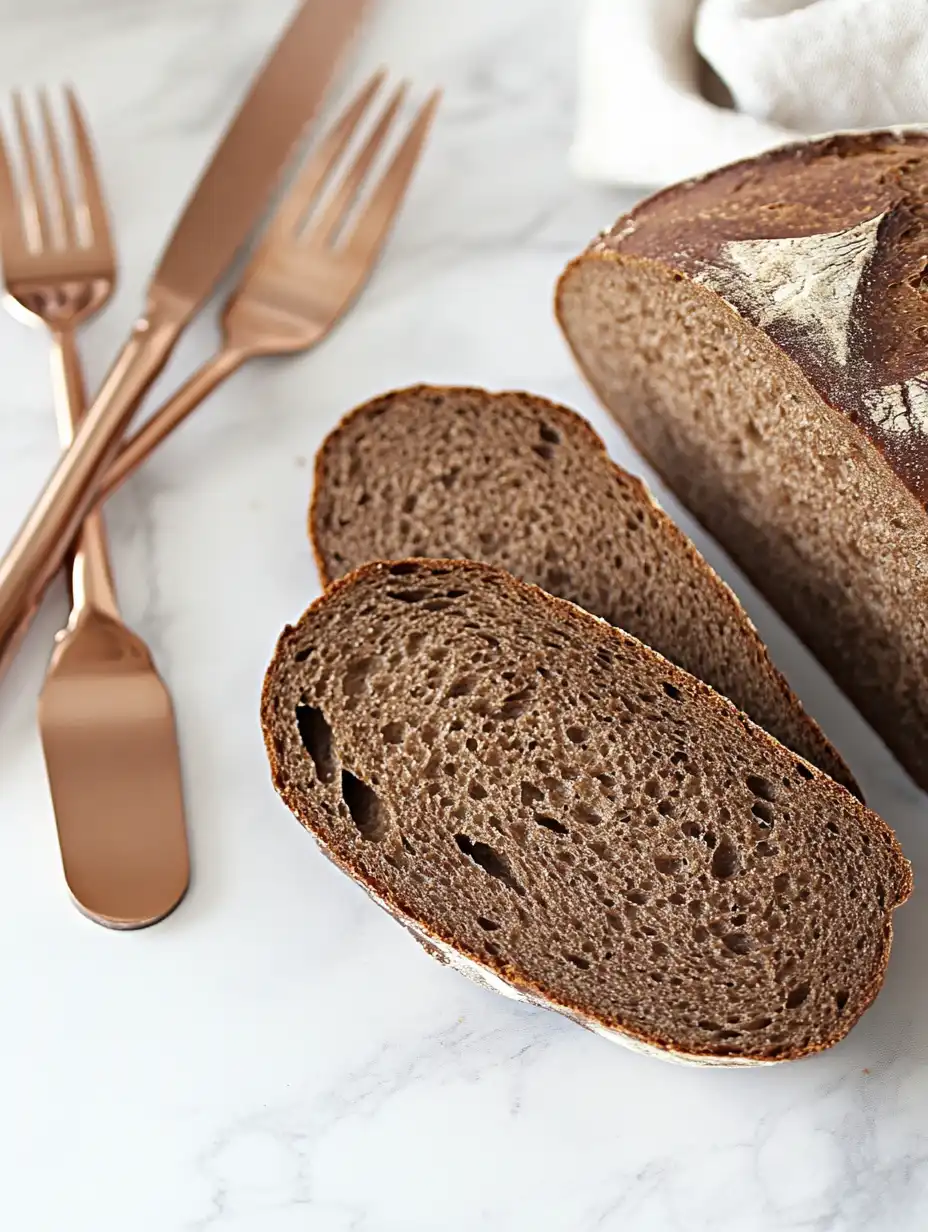
The Art of Kneading Rye
One interesting aspect of working with rye flour is that it requires more kneading than wheat flour. This is because rye contains less gluten, the protein that gives bread its structure and elasticity. Don’t be discouraged if your dough seems sticky or less pliable than you’re used to – this is perfectly normal for Sourdough Pumpernickel Bread. The extra kneading time allows the limited gluten in rye to develop fully, resulting in a better texture in your final loaf.
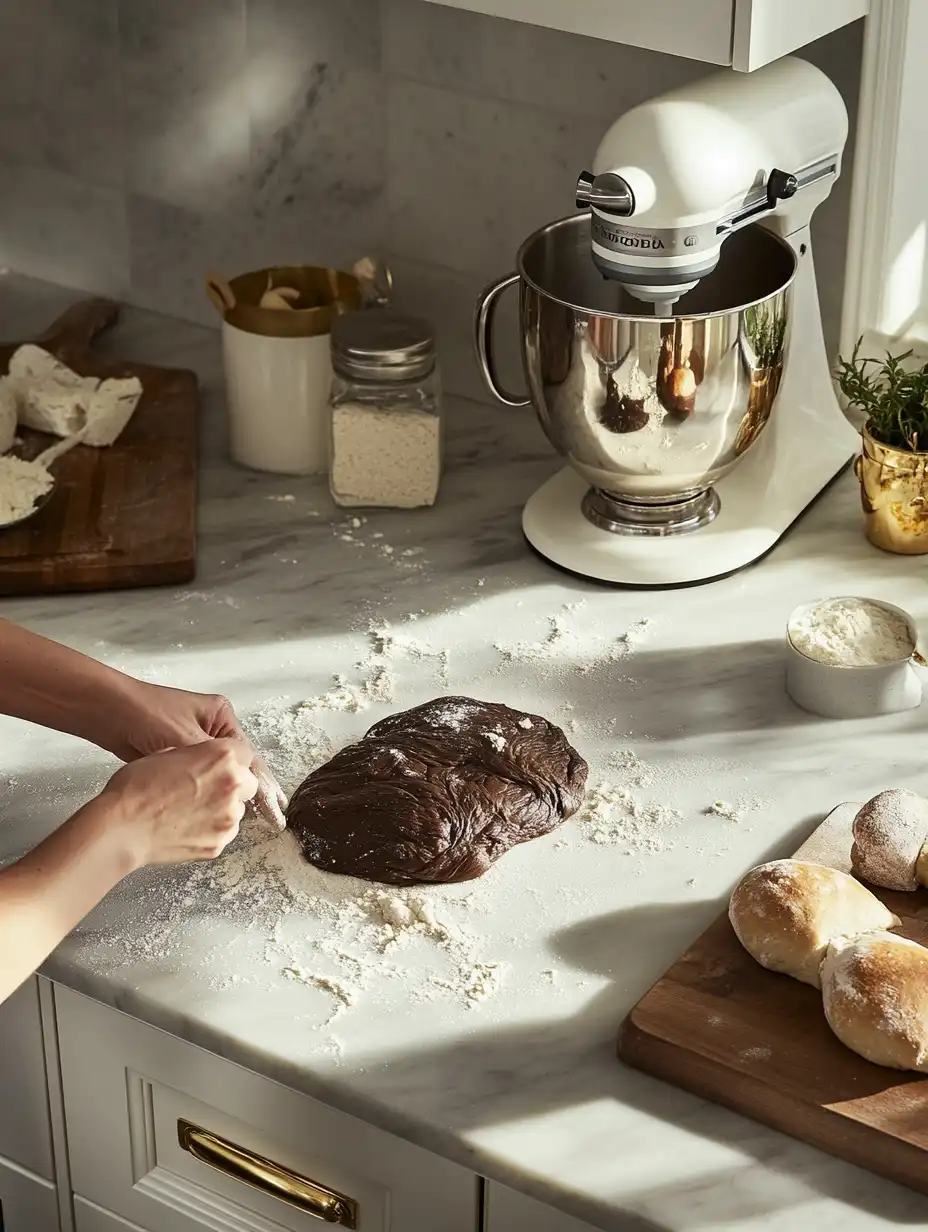
Now, let’s dive into the recipe for this fantastic Sourdough Pumpernickel Bread!
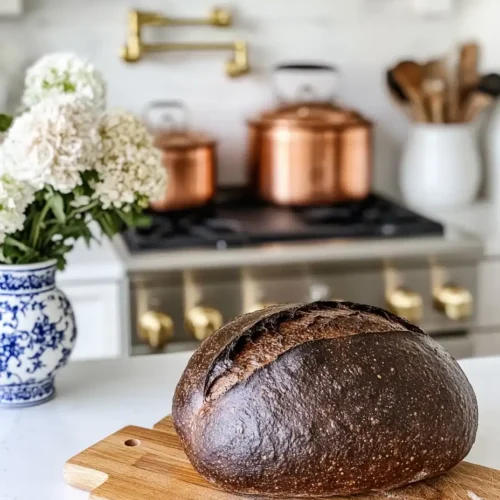
Sourdough Pumpernickel Bread
Ingredients
- 1/2 cup sourdough starter: bubbly and active
- 1 1/4 cup all-purpose flour
- 1 1/4 cup dark rye flour
- 1 tablespoon brown sugar
- 1/4 cup molasses
- 1/4 cup cocoa powder
- 1/4 cup butter softened
- 1/2 tablespoon salt
- 1 cup water
Instructions
- Feed your sourdough starter 4-12 hours before beginning the recipe. It should be really nice and bubbly.
- Add your active starter, flours, sugar, molasses, cocoa powder, softened butter, salt, and water to the bowl of a stand mixer with a dough hook.
- Mix at low speed for 2-3 minutes until you notice the dough pulling away from the sides of the bowl into a ball. Increase your speed and mix for another 4-5 minutes until the windowpane test is met*.
- Set the dough in a lightly oiled bowl covered with a damp tea towel, plastic wrap, or a lid. A dry towel will cause the dough to dry out considerably, and we want it to stay moist.
- Place in a warm location to begin the bulk fermentation. We’re looking for doubling, which should take somewhere in the realm of 8-12 hours.
- After the first rise, roll out the dough into a rectangle on a floured surface. Shape by rolling up as a traditional loaf and pressing down the seam.
- Place seam-side down in a lightly buttered or parchment paper-lined loaf pan. You can use a Dutch oven in place of a loaf pan, working your dough into a boule or round loaf.
- Again, cover your pan with a damp tea towel and let the dough rise in a warm place for 2 to 4 hours until doubled.
- With the completion of your second rise, preheat the oven to 375°F (190°C).
- Score the top of your loaf, if desired. This creates a beautiful crust with very little effort.
- You can add an optional egg wash at this point. Whisk together one egg with a tablespoon of water, then brush it over the top of the loaf.
- Bake for 35 to 40 minutes, cooling completely before slicing.
Notes
- *Check for proper gluten development by using the windowpane test. Take a small piece of dough and pull it apart in a rectangular shape, checking if the center is stretching to a thin, see-through “windowpane” where light can be seen through it, or if it simply tears or breaks apart. Tearing too easily indicates the gluten needs more time to develop. If this is the case, continue mixing for another few minutes.
- Rye flours can be confusing. They come in white, medium, and dark varieties, with varying levels of textures and nutrition depending on what parts of the grain are left intact. Dark rye flour generally includes the greatest portion, if not all, of the grain (bran, endosperm, and germ), providing a bolder flavor and higher nutrition. This is what sets pumpernickel apart and what you’ll want to look for.
- If you have a grain mill like me, you can grind whole rye berries to make your own rye flour.
- Sourdough Pumpernickel Bread tends to have a pretty sticky dough. This is due to rye having less gluten-forming protein than wheat flours. You won’t want to add additional flour for risk of a dry loaf of bread, but working on a well-floured surface with floured hands should help. Use a bench scraper as needed.
Ingredients
- 1/2 cup sourdough starter: bubbly and active
- 1 1/4 cup all-purpose flour
- 1 1/4 cup dark rye flour
- 1 tablespoon brown sugar
- 1/4 cup molasses
- 1/4 cup cocoa powder
- 1/4 cup butter, softened
- 1/2 tablespoon salt
- 1 cup water
Instructions
- Feed your sourdough starter 4-12 hours before beginning the recipe. It should be really nice and bubbly.
- Add your active starter, flours, sugar, molasses, cocoa powder, softened butter, salt, and water to the bowl of a stand mixer with a dough hook.
- Mix at low speed for 2-3 minutes until you notice the dough pulling away from the sides of the bowl into a ball. Increase your speed and mix for another 4-5 minutes until the windowpane test is met*.
- Set the dough in a lightly oiled bowl covered with a damp tea towel, plastic wrap, or a lid. A dry towel will cause the dough to dry out considerably, and we want it to stay moist.
- Place in a warm location to begin the bulk fermentation. We’re looking for doubling, which should take somewhere in the realm of 8-12 hours.
- After the first rise, roll out the dough into a rectangle on a floured surface. Shape by rolling up as a traditional loaf and pressing down the seam. This bread is also wonderful baked in a dutch oven as a round Artisan style loaf.
- Place seam-side down in a lightly buttered or parchment paper-lined loaf pan. You can use a Dutch oven in place of a loaf pan, working your dough into a boule or round loaf.
- Again, cover your pan with a damp tea towel and let the dough rise in a warm place for 2 to 4 hours until doubled.
- With the completion of your second rise, preheat the oven to 375°F (190°C).
- Score the top of your loaf, if desired. This creates a beautiful crust with very little effort.
- You can add an optional egg wash at this point. Whisk together one egg with a tablespoon of water, then brush it over the top of the loaf.
- Bake for 35 to 40 minutes, cooling completely before slicing.
Notes
- *Check for proper gluten development by using the windowpane test. Take a small piece of dough and pull it apart in a rectangular shape, checking if the center is stretching to a thin, see-through “windowpane” where light can be seen through it, or if it simply tears or breaks apart. Tearing too easily indicates the gluten needs more time to develop. If this is the case, continue mixing for another few minutes.
- Rye flours can be confusing. They come in white, medium, and dark varieties, with varying levels of textures and nutrition depending on what parts of the grain are left intact. Dark rye flour generally includes the greatest portion, if not all, of the grain (bran, endosperm, and germ), providing a bolder flavor and higher nutrition. This is what sets pumpernickel apart and what you’ll want to look for.
- If you have a grain mill like me, you can grind whole rye berries to make your own rye flour.
- Sourdough Pumpernickel Bread tends to have a pretty sticky dough. This is due to rye having less gluten-forming protein than wheat flours. You won’t want to add additional flour for risk of a dry loaf of bread, but working on a well-floured surface with floured hands should help. Use a bench scraper as needed.
Creating this Sourdough Pumpernickel Bread is truly a labor of love, but the results are so worth it. The rich, complex flavor profile from the combination of sourdough, rye, molasses, and cocoa powder creates a bread that’s perfect for everything from sandwiches to simply enjoying with a pat of butter. Give this recipe a try, and you might just find yourself with a new favorite bread!
Looking for more Sourdough recipes? Be sure to check out our other Sourdough Posts!

